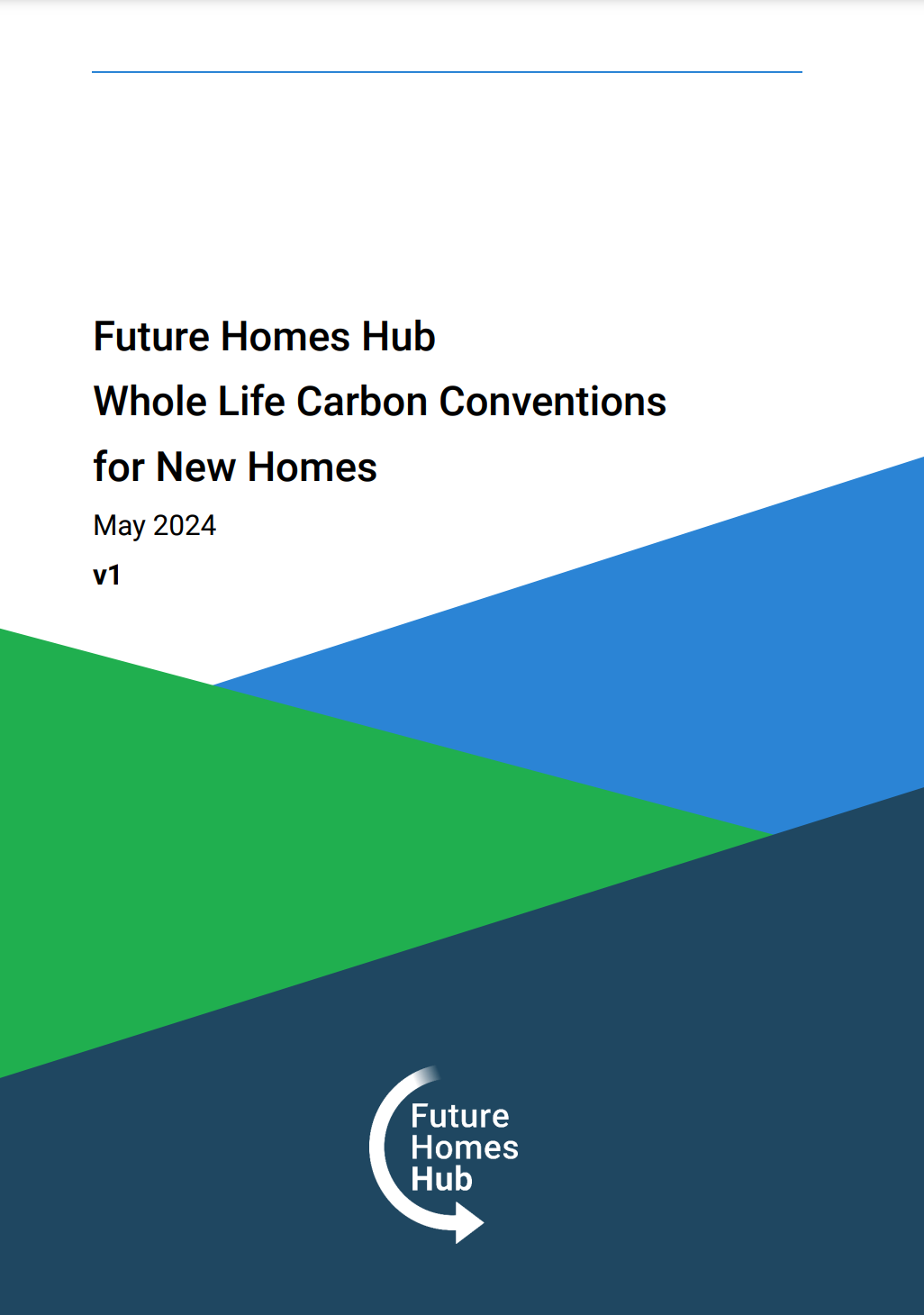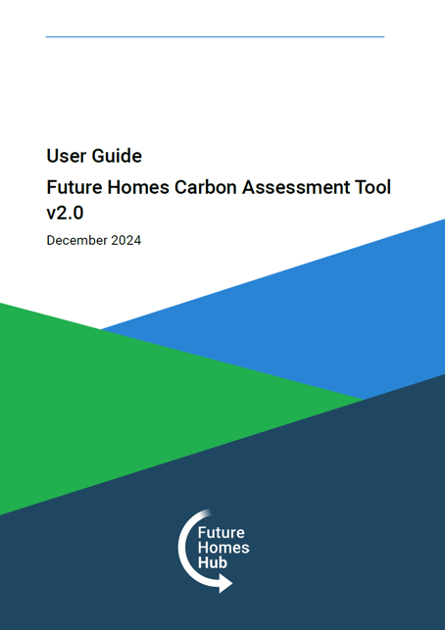Whole life carbon conventions and simple tool
Whole Life Carbon Conventions for New Homes
Developed by the sector – comprising of developers, manufacturers and whole life carbon experts – the FHH Whole Life Carbon Conventions for New Homes aim to help businesses across the sector share and report whole life carbon assessments on a consistent basis.
The WLC conventions:
- Drive consistency of WLC assessment outputs by agreeing the assumptions and conventions relevant for new homes sector.
- Help the sector move towards mainstream measurement and disclosure – building awareness and engaging the mass market.
The Conventions reference the same core methodology defined by EN 15978 and RICS PS 2023 and can be used with any commercial assessment tool.
Thank you to all of those who have contributed their time. See the Embodied and whole life carbon project page for the list of those involved.
Whole life carbon tool for homebuilders
The Future Homes Carbon Assessment Tool focus is to estimate whole life carbon in a way that is consistent, quick, low cost and straightforward enough to drive significant uptake across the new homes sector.
It enables whole life carbon to be compared between different design options for individual dwellings and informs early-stage decision making. The first version of the tool uses only pre-defined example build-ups, and is not appropriate for detailed, later stage, analysis.
The Future Homes Carbon Assessment Tool:
- is aimed at developers, architects and designers.
- is available now via a dedicated site carboncalculator.org.uk – or runs as an add-in for Microsoft Excel.
- provides a simple to use, accessible, free of charge way for homebuilders to calculate embodied and whole life carbon – and quickly see the potential impact of different design options, construction systems or specification choices, particularly at early design stages.
Quick start guide: Open the Future Homes Carbon Assessment Tool in our dedicated site now – Click here to get started. That’s it!
Running the Future Homes Carbon Assessment Tool as an Add-in in Microsoft Excel: This 2-minute video explainer walks through the process of setting up the FHH WLC Tool in Excel (browser version).
IMPORTANT: To download the Add-In to your computer, you will need to right click the Button below and select: Save Linked File or Download Linked File or Save Link As (depending on your browser). The Add-In is an XML file.
If you are having any issues downloading the file after viewing the video explainer then please reach out to the Future Homes Hub team.
Pre-calculators for regulated and unregulated energy demand
For those producing WLC assessments aligned with the Conventions for New Homes, two pre-calculator tools have been developed:
Regulated Energy: this helps to extract exactly the right information from a SAP 10.2 output sheet to calculate annual regulated energy consumption for gas and electricity based on location-specific weather data. (kWh/year)
WLC pre-calculator - Regulated energy from SAP outputs v1
Unregulated Energy: this calculates annual energy consumption from unregulated uses (cooking and appliances) according to the Conventions for New Homes. Not required if using Hub tool as this is built in.
WLC pre-calculator - Unregulated energy v1
Benchmarking the sector
The Hub is calling for all members to start measuring to the WLC Conventions and sharing a selection of their projects to enable us to benchmark the sector more accurately.
For more details about exactly which tools you can use, how to submit your data and how we will use and protect your data, please see our Benchmarking: Embodied and whole life carbon page.
Timeline and Next steps
For detailed information on our key milestones and next steps, see our
Embodied and whole life carbon project page.
Disclaimer
The Future Homes Carbon Assessment Tool is provided 'as is', without warranty of any kind, express or implied, including but not limited to any warranties of merchantability, fitness for a particular purpose and non-infringement. In no event shall the authors or copyright holders be liable for any claim, damages or other liability, whether in an action of contract, tort or otherwise, arising from, out of or in connection with the tool or the use or other dealings in the tool.
Embodied carbon results are intended to provide a ‘guide’ for comparison purposes and should not be taken as a definitive value for the project.
The Future Homes Carbon Assessment Tool relies on users inputting project information, including high-level building geometry inputs and selecting pre-defined build-ups for one or more elements. Pre-defined build-ups and associated material quantities within the tool are based on typical indicative build-ups and may not reflect the exact constructions and quantities used in your project.
Users should therefore carefully consider and take responsibility for how they apply the tool




